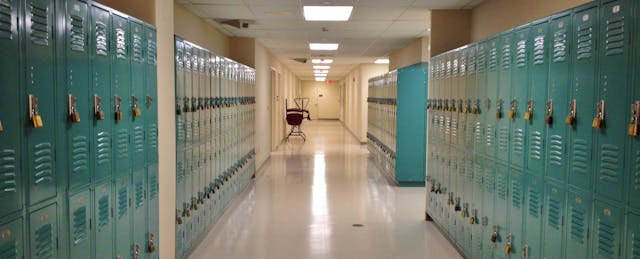Coronavirus spreads quickly. But perhaps not as quickly as panic. And as schools and college campuses shutter in response to (or ahead of) COVID-19’s spread, some observers wonder which ailment, exactly, they’re reacting to.
Closing institutions in the face of a highly communicable disease makes intuitive sense. And even though children haven’t been especially susceptible to this coronavirus, research suggests that closing schools to help maintain “social distance” among people can help slow an outbreak.
But while schools and colleges always justify their decisions to close by naming student health and safety as their top priority, one of their key motivations while making crisis management decisions is “avoiding lawsuits,” says Rob Manzer, the chief academic officer at online learning network Acadeum, who previously worked as an administrator at multiple universities, including University of Dallas, Nebraska Wesleyan University and Ohio Northern University.
“You also have the peer pressure of other schools closing,” Manzer explains. “You’re looking at this as a scenario when you would have a lot of liability if something happened to the student if you remained open. As a result, crisis management teams tend to be very conservative. They tend to lean toward closure.”
That kind of thinking has some people wondering whether by closing, education institutions are at least partially trying to absolve themselves of responsibility for caring for students. After all, there are clear downsides to banishing students from school or campus, and suggesting that they’ll be safer elsewhere assumes that all of them have decent alternatives. In other words, keeping learners out of classrooms during a pandemic won’t necessarily guarantee their health.
As two students of newly-closed Amherst College wrote in an op-ed published in the Washington Post: “The local communities that the schools are sending thousands of students back to also largely don’t have the resources to deal with an outbreak. The schools have simply chosen to opt out, leaving students to fend for themselves, and shift the responsibility elsewhere.”
Some K-12 teachers feel similarly. Several schools are closed in New Rochelle, New York, and as a result, unsupervised students are home alone or “roaming the streets,” Candance Pinn, a local kindergarten teacher, told NPR on Thursday. “There are kids out and about where they wouldn’t be if they were in school.”
Elementary and secondary schools provide for many students’ basic needs, which may not be met when those institutions close. Students experiencing homelessness may only find stability in their daily classroom routines. Those who rely on free breakfast and lunch programs may go hungry without them. In New York City alone, more than 100,000 students are homeless, which is one reason why the public school leaders there say they are unlikely to close except as a last resort, even as private schools shut down.
Additionally, primary school closures present working parents with a child care conundrum. Since not all families have a backup option for days or weeks of missed school days, it’s likely that, as Pinn observed, some kids will be more or less left to their own devices.
At the college level, shuttering campuses may also cut students off from their only reliable sources of shelter and food. Those who work at on-campus jobs may lose their incomes. For students already living on the financial edge, “a crisis like this coupled with insufficiently informed support could really tip them over,” says Sara Goldrick-Rab, a Temple University professor, college affordability activist and chief strategy officer for emergency aid at Edquity.
“When I see a college say, ‘just go home on Monday,’ I really have to wonder how well they know their students,” she says. “You need to start with what’s going to work for those who are struggling the most.”
A COVID-19 response guide published this week by Goldrick-Rab’s center, the Hope Center for College, Community and Justice, recommends colleges consider how dorm and dining hall closures might affect students who are home and food insecure; what medical care might be available to students who lack health insurance; and whether emergency aid can help students cover travel expenses for leaving campus.
While learning outcomes may seem less immediately important than health during a pandemic, the delayed academic progress that can result from school closings can also have serious consequences for student wellbeing. Students may earn worse grades as a result of courses shifting online, either because they don’t take to the format, Manzer says, or because they don’t have access to required technology like laptops, Goldrick-Rab adds. College students who fall below credit thresholds may lose their eligibility for financial aid.
And those who are only loosely attached to education institutions to begin with may become even less likely to earn degrees, Manzer says. As he put it: “Their velocity is slowed, and they’re gone.” That could have long-term consequences, since lower educational attainment is linked to worsened health outcomes.
“That’s the big thing schools are going to be facing here: They are putting the students at risk by virtue of closing, in terms of their progress,” he says. “The fallout for students, particularly students who are not your top students, is likely to be pretty significant.”


